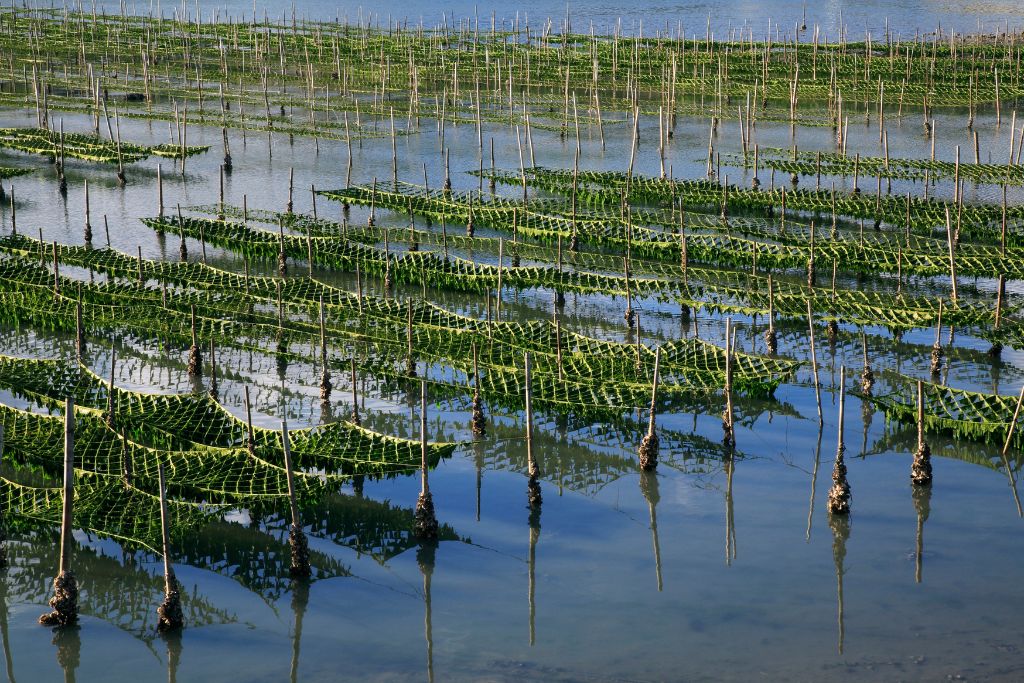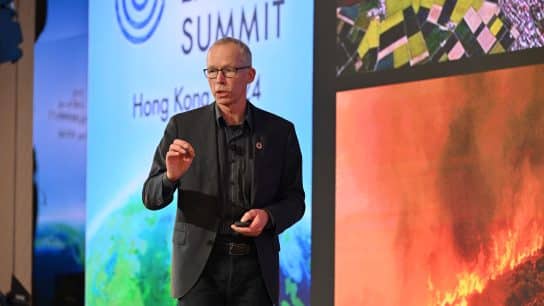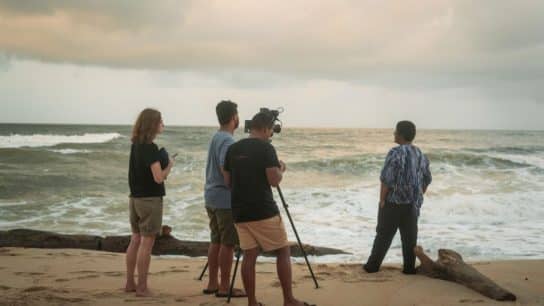In the battle against climate change, innovative solutions are essential. One such solution lies beneath the waves, where an unsung hero is quietly flourishing – seaweed. Often overlooked, seaweed holds immense potential in combating climate change and creating a more sustainable future. In the bustling city of Hong Kong, one school renowned for its efforts in increasing sustainability has initiated a groundbreaking seaweed farming project as part of its commitment to environmental stewardship. Interviewed by Earth.Org, two team members of the school’s Social Impact and Sustainability Programme explained the behind-the-scenes of building seaweed farms and what their students learned from it.
—
The world is witnessing an alarming increase in extreme weather events, rising sea levels, and biodiversity loss, all exacerbated by human activities. Hong Kong, with its densely populated urban environment and proximity to the sea, is particularly vulnerable to the impacts of climate change. Rising temperatures, more frequent and powerful typhoons, and deteriorating air quality are just a few of the challenges the city faces.
In the face of mounting environmental disasters and the rapidly accelerating climate crisis, schools have a crucial role to play in fostering sustainability and equipping future generations with the knowledge and skills to tackle these pressing challenges.
Just hours before a powerful typhoon, the strongest to hit the city since 2018, slammed Hong Kong earlier this month, Earth.Org visited The Harbour School (THS), an international school in Hong Kong strongly committed to environmental stewardship, to speak with the minds behind a remarkable sustainability project that has been shortlisted for T4 Education’s World’s Best School Prize for Environmental Action.
A First-Of-A-Kind Educational Seaweed Farming Project to Promote Sustainable Development
“One of the things I love about this job is that people bring you crazy ideas and you just get to try them,” said the school’s boat captain Johnson Stanley, recalling the moment when his colleague Handrich Hernando, Social Impact and Sustainability Programme (SISP) Coordinator at The Harbour School, first proposed the incredibly unique and potentially revolutionary idea. Just a few months after that conversation, THS Centers of Excellence – The Marine Science Center, The Foundry and The Black Dolphin together with the SISP Team began an intense two-week boot camp with Grade 8 students to design, build, and deploy 10 seaweed farms into Hong Kong seawaters.
“The school’s sustainability team had the idea and quickly got everyone else involved,” Hernando told Earth.Org. “We brought together Dean Lea and Francis Asuncion from the school’s Foundry, marine biologist Carlos Rius Errando and Sarah Taylor from the school’s Marine Science Centre, and our sustainability team to bring this idea to life.”
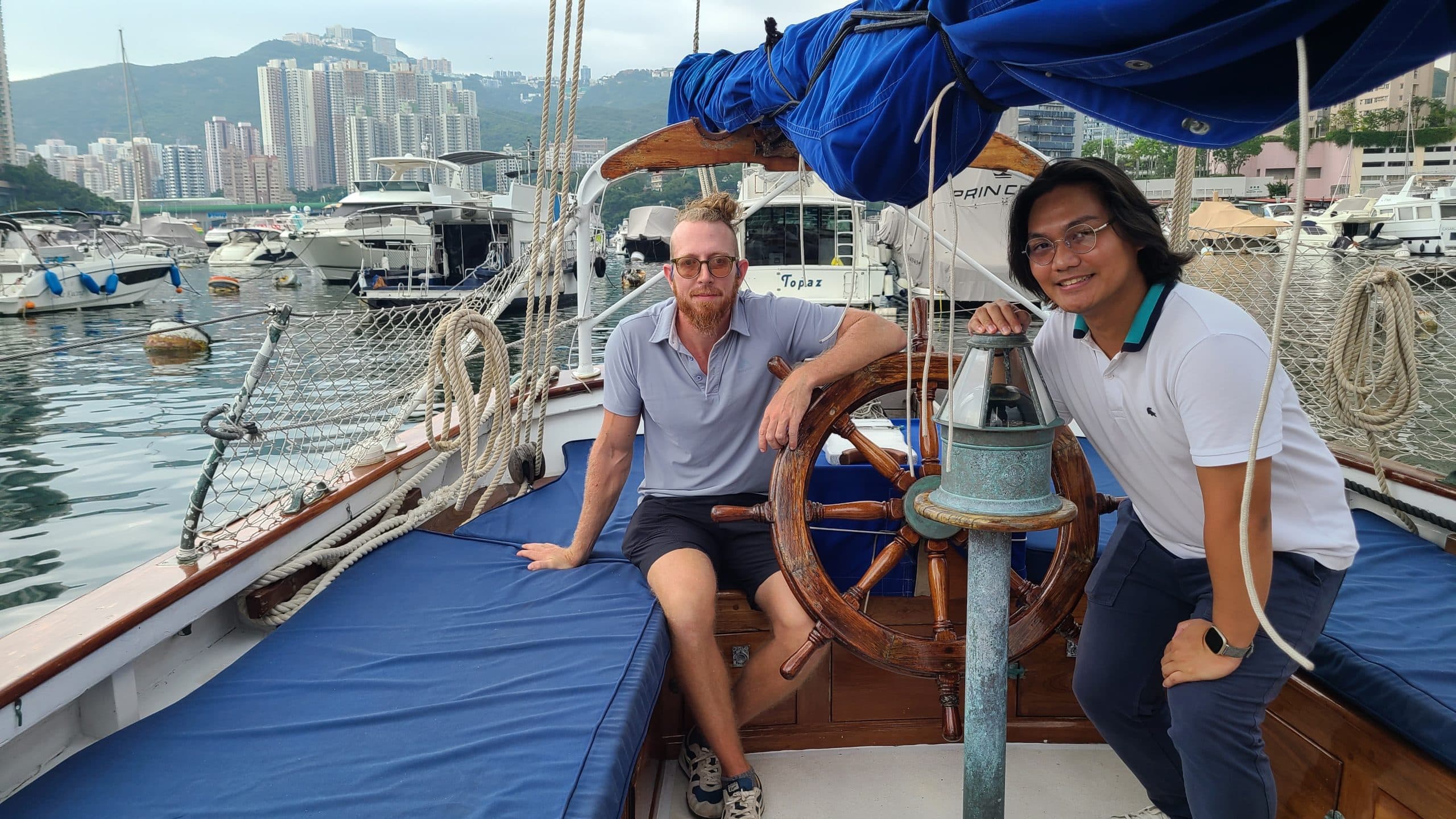
Boat captain Johnson Stanley (left) and Social Impact and Sustainability Programme Coordinator Handrich Hernando (right). Photo: Martina Igini/Earth.Org.
“Dean has a lot of experience building stuff and I have a lot of experience with what survives in a marine environment, while Carlos is our ‘seaweed guy.’ He is very knowledgeable about what grows well and also what is useful to grow,” explained Stanley as he moved up and down the school’s boat – The Black Dolphin – to secure everything before the arrival of the typhoon.
The 50-foot sailboat serves as an outdoor classroom for the students, who get the chance to go on regular field trips in open waters to learn about different aspects of marine biodiversity and the ocean.
During the first week of the boot camp, the G8 students spent a lot of time at the school’s Marine Science Centre, where they learned about the biology of seaweed as well as its uses and benefits to the environment. At the Foundry, they looked into different materials to find the most suitable ones to build the floating structure.
“A lot of thinking went into the material choice, as we had to understand what works best in water. We also spent a lot of time reflecting on where to locate the farms, as we wanted to find a location that would not create navigational hazards or obstruct other industries that might want to use that sea area,” explained Stanley.
Grade 8 students, who spearheaded the building of the actual farm structures in the school’s Foundry, ended up building both plastic and wooden flotation structures, each measuring about one cubic metre. For the latter, they found that only hardwood works, while softer materials such as the construction timber commonly used to build houses in Europe and the US is not suitable for underwater environments as it gets quickly attacked by marine invertebrates, preventing the structure from floating.
Both Stanley and Hernando admitted encountering several difficulties during the process.
“Suddenly we’re dealing with an amount of mass that’s difficult for one human to manage, especially when soaked with water and covered in several pounds of seaweed,” said Stanley when describing the retrieval process of the farms.
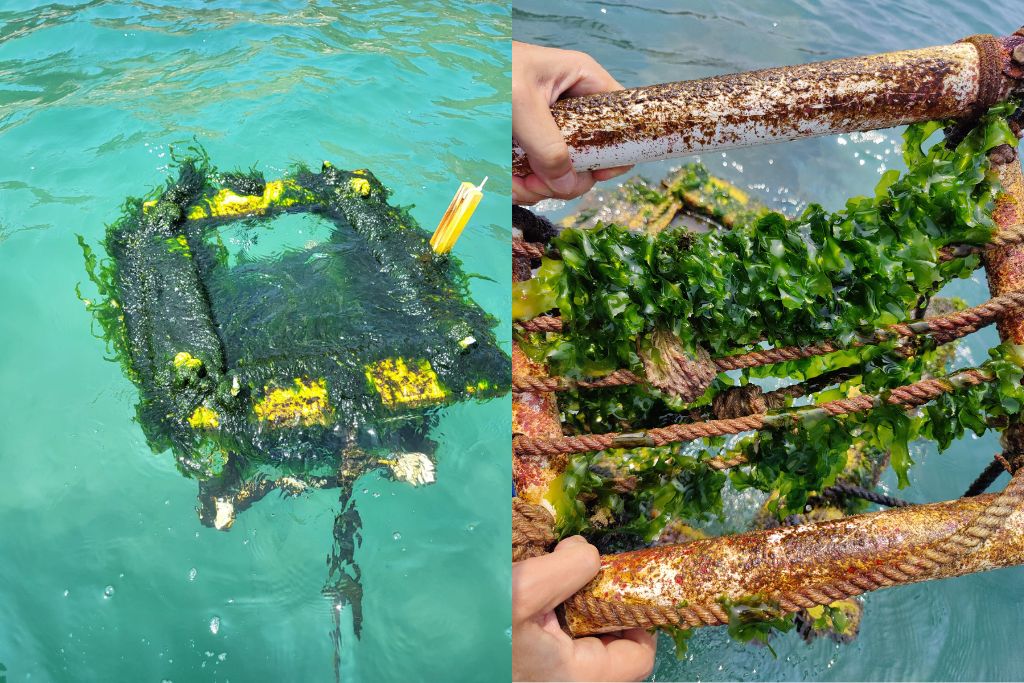
Seaweed harvest. Photo: Handout.
They also found that seaweed grows at an extremely rapid pace, realising that it might be a good idea to retrieve the farms mid-season to cut off a bunch of the harvest and free space between the frame and the sea surface for more seaweed to grow.
While some of it got lost, most of the seaweed harvested is now stored in tanks in the school’s marine centre.
Why Seaweed?
“We were inspired by the prominence of seaweed in Asia,” said Hernando when asked what led to choosing to grow seaweed.
“Despite being surrounded by water, Hong Kong is not commonly active in farming seaweed,” he explained. “However, China has a huge seaweed farming industry, and so do some of our Asian neighbours, including Indonesia, Korea and the Philippines.”
And this is not by chance. Seaweed, a type of marine algae, “is so much more than just food,” holding immense potential in combating climate change and creating a more sustainable future for our planet, from sequestering carbon to filtering seawater, contributing to ocean restoration. The versatile algae is also used in the manufacturing of industrial products such as cosmetics and food preservatives.
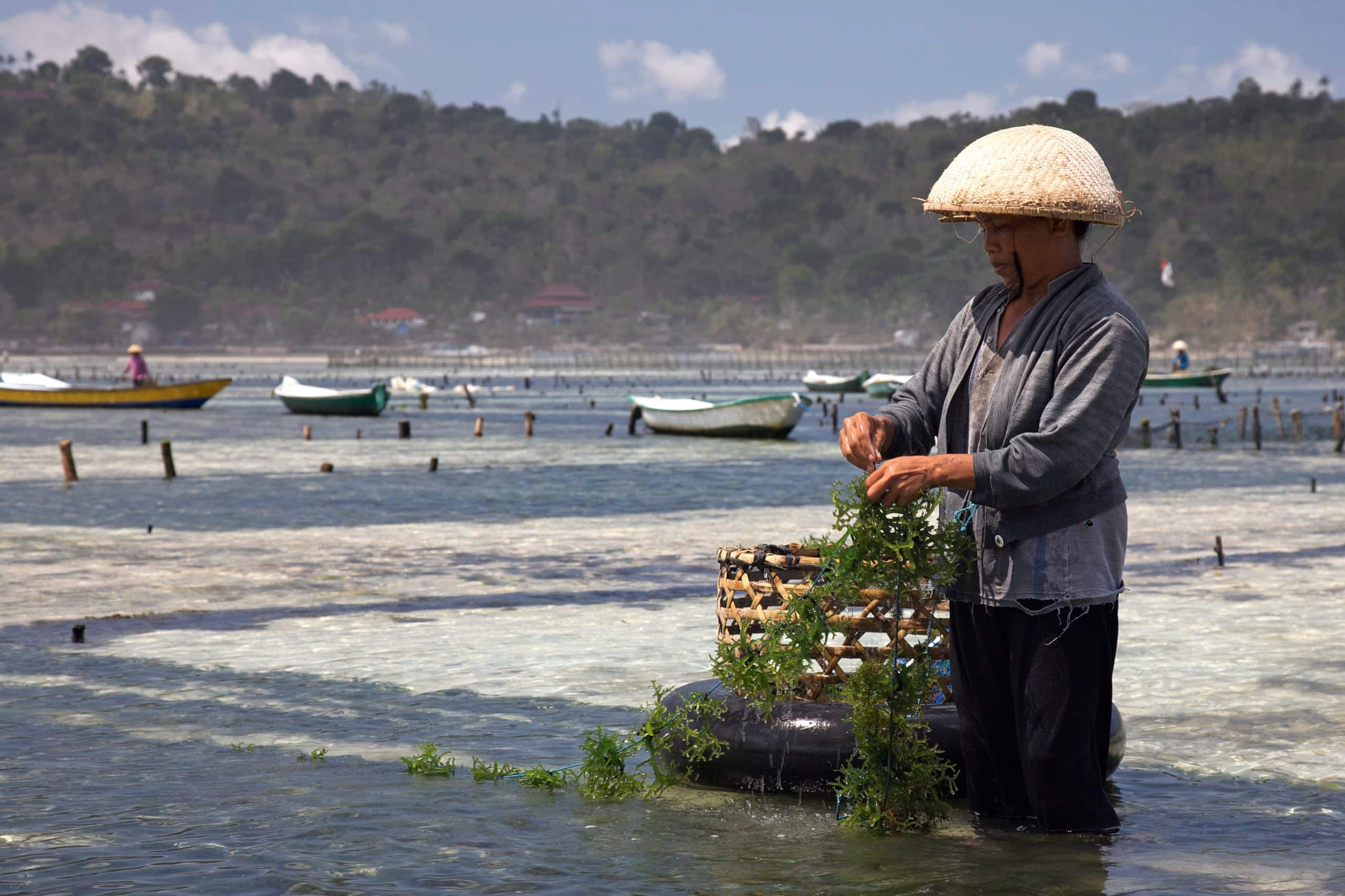
Seaweed farming in Nusa Lembongan, Bali, Indonesia. Photo: Wikimedia Commons.
According to a BBC report, seaweeds are thought to sequester nearly 200 million tonnes of carbon dioxide globally every year – as much as New York State’s annual emissions. Moreover, seaweed forests, also known as kelp forests, play a crucial role in marine ecosystems and contribute to what is known as “blue carbon.” These underwater forests not only absorb CO2 but also provide a habitat for a diverse range of marine species. By protecting and restoring these coastal ecosystems, we can enhance biodiversity, improve water quality, and boost the resilience of coastal communities.
Another advantage of seaweed is that its cultivation requires no arable land, freshwater, or chemical fertilisers. Unlike traditional land-based agriculture, it has a minimal environmental footprint. Seaweed farms can be established in coastal areas, providing economic opportunities for coastal communities while minimising the negative impacts associated with land-based agriculture, such as deforestation, soil degradation, and excessive water usage. And if that wasn’t enough, the same BBC study also suggests that approximately 48 million square kilometres of the world’s oceans are suitable for seaweed farming.
Seaweed also has immense potential as a renewable resource with various applications. Beyond its environmental benefits, it can be utilised in the production of biofuels, bioplastics, and even as a nutritious food source. The cultivation and utilisation of seaweed for biofuel production offer a promising avenue to reduce reliance on fossil fuels and transition towards a low-carbon economy. Furthermore, the development of seaweed-based bioplastics can help combat plastic pollution and promote the circular economy.
Lastly, seaweed plays a vital role in coastal protection and restoration. Its extensive root systems help stabilise sediments, reducing coastal erosion and the impacts of storm surges. By restoring and enhancing seaweed habitats, we can fortify vulnerable coastlines, protect valuable ecosystems, and mitigate the devastating effects of climate change on coastal communities.
You might also like: Utilising Kelp Forests for Carbon Sequestration
The Benefits of Field Learning
The seaweed project introduces and educates students and the wider community about this sustainable aquaculture, providing both educational and environmental benefits.
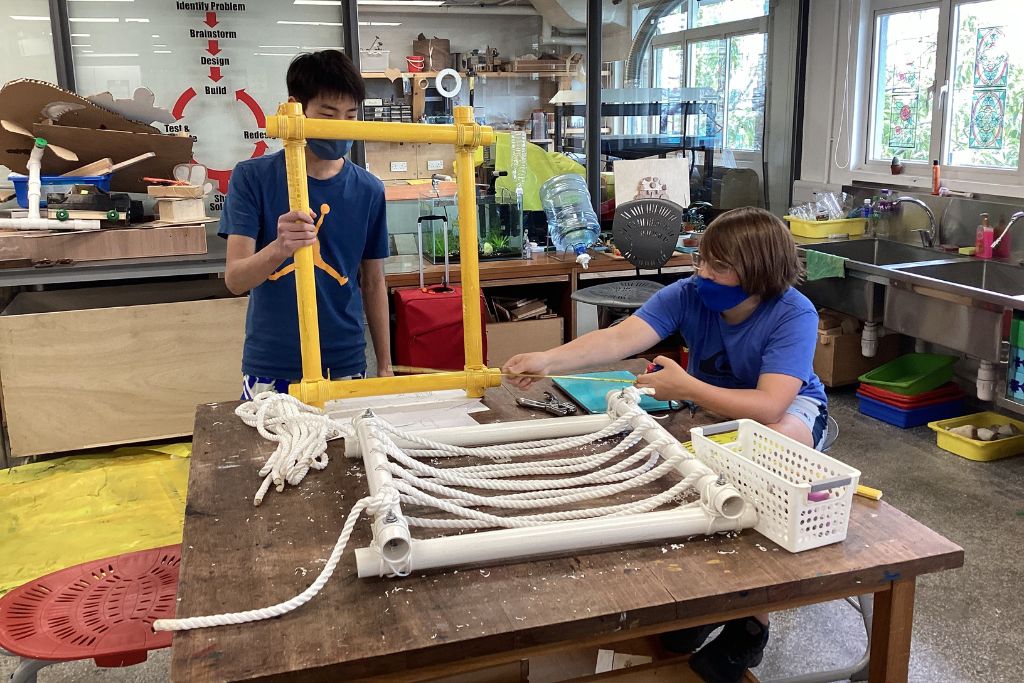
Students building seaweed farms. Photo: Handout.
“The Harbour School has always valued experiential education, and whenever possible endorses authentic and real experiences,” said Dr. Jadis Blurton, Head of School.
THS’ approach to teaching is indeed considered highly efficient. Research has continuously shown that field learning allows students to see the practical relevance of what they learn in the classroom, providing them with opportunities to apply theoretical knowledge in real-world contexts. The school’s marine centre provides a hands-on learning experience for students, allowing them to develop a deeper knowledge and understanding of marine ecosystems and an increased willingness to work towards projects that can help protect these highly endangered habitats.
According to Dr. Blurton: “If one is going to support authentic experiences, then it makes sense in today’s world to create experiences that have a real impact on today’s challenges.”
“By integrating experiential learning of marine science via hands-on work at the marine science centre and field trips on the Black Dolphin, our students are able to see, explore and investigate their learning in real terms and this has in turn, led to greater engagement and excitement in learning across all disciplines.”
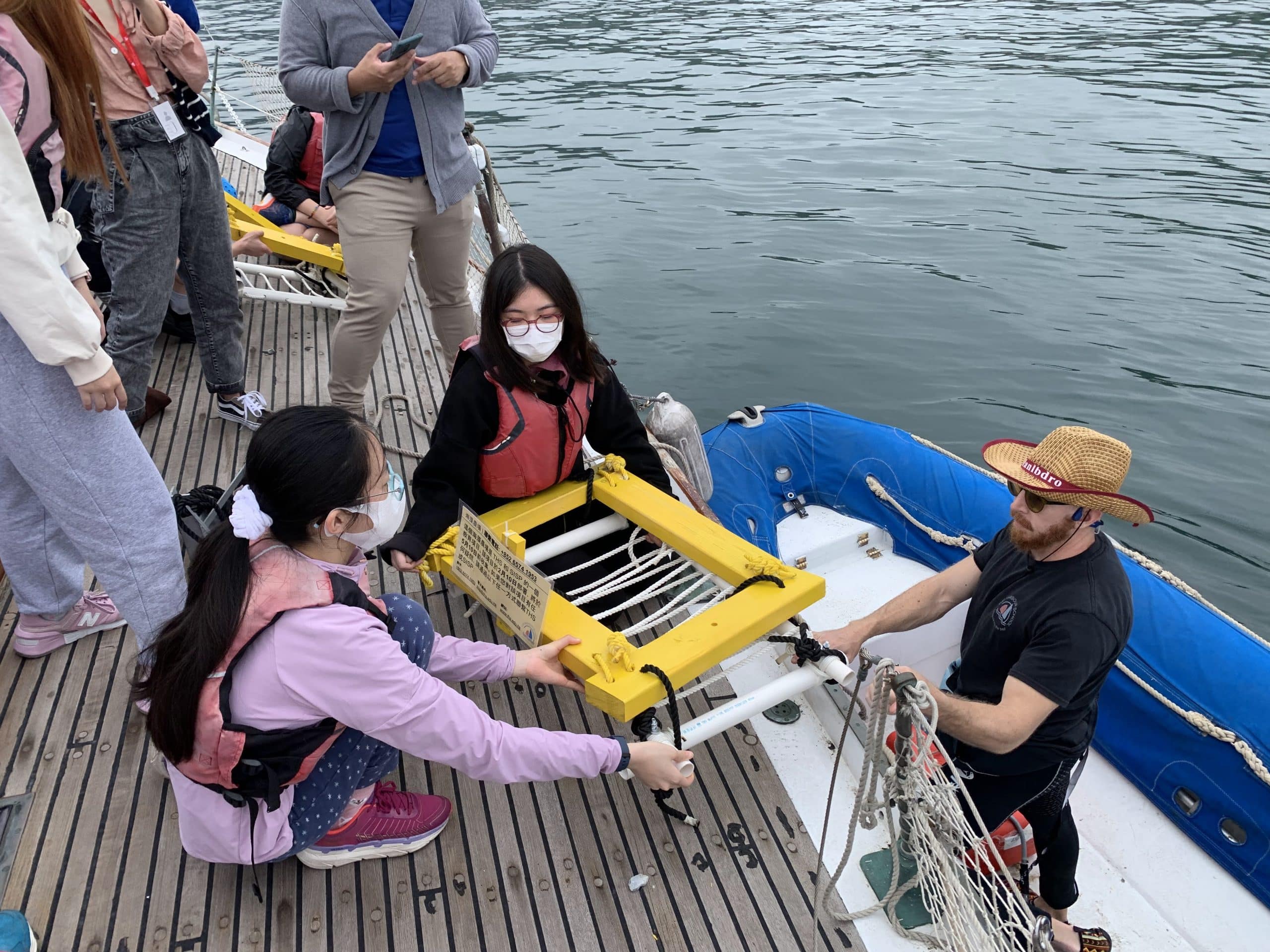
Students deploy a seaweed farm structure into the sea. Photo: Handout.
“We are extremely happy that our project has been shortlisted for T4 Education’s World’s Best School Prize for Environmental Action,” said Hernando. “Our plan for the future is to expand the project, engaging more students and the wider community in Hong Kong in sustainable aquaculture.”
More on the topic: The Importance of Environmental Education for a Sustainable Future
Embracing Sustainability
The importance of schools taking action to become more sustainable cannot be overstated. As Hong Kong faces the challenges of a rapidly changing climate, schools have a unique opportunity to lead by example and instil a sense of environmental responsibility in their students. Through their initiatives, educational institutions become catalysts for change, driving the transition to a more sustainable future in Hong Kong and beyond.
The Harbour School’s seaweed farming project and other sustainability strategies demonstrate the school’s dedication to creating a greener Hong Kong. By combining education, innovation, and collaboration, the school inspires a generation of environmentally conscious individuals who are equipped with the knowledge and skills to address the pressing environmental challenges of our time.
This remarkable initiative serves as a shining example for other educational institutions, businesses, and communities worldwide. By embracing sustainability in all aspects of our lives, we can work together towards a more sustainable and resilient future for our planet.
You might also like: Changing the Way We Eat: An Interview With Matt Reid, Founder and CEO of KIN








